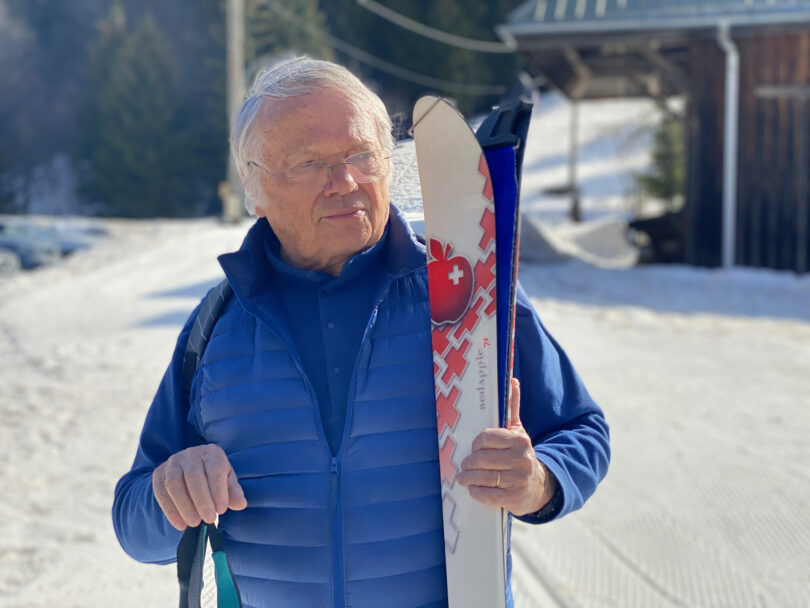If you’ve been around Falcons for a while, you’ll recognize the name Jean-François Georges. Jean-François led Dassault’s Civil Aviation programs from 1992 until his retirement in 2003. He passed away recently at 83.
Jean-François was a transformational figure, bridging the days when the company focused mainly on designing beautiful, well-built aircraft to one that was more outward-looking, more directly engaged with customers, more aware of their concerns and needs. He was the stitching that knitted operators and Dassault employees into a special family.
Larger than life, Jean-François was an accomplished engineer, pilot, jazz and classical musician, alpinist, rugby enthusiast and author of three books exploring the interplay of his passions. He packed a lot into his 83 years.
He entered SUPAERO, France’s oldest, most prestigious school for aerospace engineering in 1964. Fellow students were surprised to learn that he was also a professional saxophonist leading a 16-piece swing band.
Later in life, he led full orchestras. His admiration for both American and French artists like Duke Ellington, Debussy, Ravel and Fauré, was reflected in his aviation career. In business, he took inspiration from rugby for its teamwork and the seamless hand-offs that are key to success.
He was known to occasionally land a Robin DR 400 single-engine plane on snow-covered glaciers to photograph the Alps. After retiring, he earned his seaplane rating in Canada and wrote Blues in the Clouds saying: “My life was organized between these three demanding mistresses: aviation, the mountains and music.” He wove those into a beautiful composition.
Jean-François joined Dassault in 1966 as a flight test engineer in the Falcon 20 program. Later, he was responsible for the flight deck design of Dassault’s Mercure airliner—a plane ahead of its time in many ways, including the first use of a HUD in an airliner which Jean-François pioneered. It allowed the aircraft to be certified for Category III all-weather landings. In the 1980s, he participated in the European Hermes space plane program.
In 1992, Serge Dassault appointed him head of civil aviation, which gave him responsibility for Falcon Jet in the U.S. and all civil operations in France. After many successful years laser-focused on technological advances, he fully embraced the new complexities of understanding customer perspectives. Always a great team leader; his love of others shone through in a new way.
He renamed the U.S. company Dassault Falcon Jet, in part, to emphasize the unity of the trans-Atlantic organization. He also rebranded “After-Sales Service” as “Customer Service”. With the change, “the word ‘service’ took on its noble meaning,” he wrote.
In these years, he formed a close relationship with John Rosanvallon, who led DFJ and was Deputy Director of Civil Aviation under Jean-François. In the service area, he teamed DFJ’s Pete Ginocchio with Claude Frey in France, two strong managers who worked well together. Ginocchio was widely admired in the U.S. for developing the Cessna Citation product support organization from scratch in the 1970s. The new leadership team started listening more attentively to customer concerns through organized customer seminars, today’s M&Os.
While Falcons had always been admired in the U.S. for their technology and performance, the U.S. market, in particular, began to recognize a new dedication to supporting the product.
I’ve been the grateful beneficiary of his wisdom and foresight. He shaped my career, encouraging me to move from Dassault Engineering to Dassault Falcon Service, to learn the customer-facing side of the business—an uncommon path at the time. His relentless focus on service set a course for today’s worldwide network of 60 service centers, 15 parts distribution centers, 2,200 professionals and a “Whatever It Takes” customer support ethos.
When thinking about Jean-François, I’m reminded how rich life is when we pursue our passions.
Senior Vice President, Worldwide Falcon Customer Service & Service Center Network
Dassault Aviation








